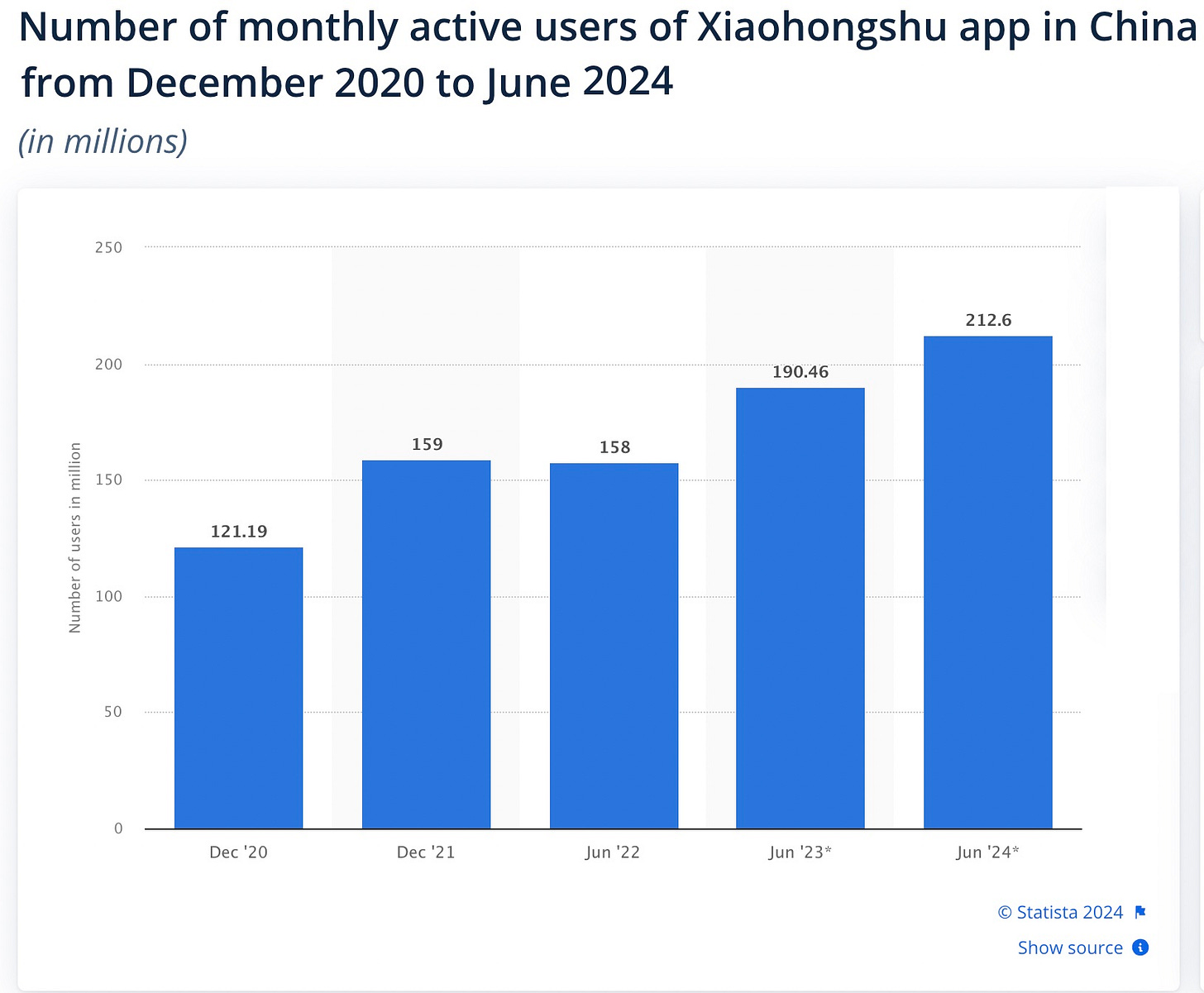Digital worlds
To orient
The aim of this series is thinking through and thinking with China. One of the references for ‘to orient’ is Edward Said, and while these notes likely fail to meet his exacting standards, hopefully the intent and core ideas might. The aim - the need - is to recognise and reckon with China, in all its complexity and detail. This entails considering it on its own terms and in reference to a range of issues, rather that it being understood against and through the concerns of the United States, or seen as the other of ‘the West’. In so doing, the hope is not only to appreciate difference with greater nuance, but also identify similarities and common challenges. With that in mind, this note considers smartphones and social media.
A robust critical literature - popular through to academic - has now developed around the individual and collective consequences of the transition from the internet to smartphones, along with the rise of ‘surveillance capitalism’ and the harms caused by algorithmically optimised social media. One of the most common features is a remarkably limited geographical scope of interest. An illustrative example of this tendency is the collaborative review documents compiled by Jonathan Haidt and his colleagues on a range of issues related to social media: an overwhelming focus on the United States, and from there other Western countries. This limitation can be found in even the most nuanced of thinkers like L.M. Sacasas, which I raised in my conversation with him in 2022. Certainly, it is from Silicon Valley and the United States that so much of the internet has developed, and what happens there remains vitally important. Nonetheless, what we are dealing with now are global phenomena, a wider view is required. As more of the world comes online and is connected, what is happening elsewhere becomes more consequential, and so we should become more curious. There is a simple empirical rationale here: an increasing majority of people using phones and social media are outside of the West, what they do online matters.
A noteworthy exception is Max Fisher’s, The Chaos Machine: The Inside Story of How Social Media Rewired Our Minds and Our World, which looks at the impact of these platforms in a range of places, including Myanmar, Sri Lanka and Brazil. It details how destructive these platforms have been in contexts where there has been limited content monitoring or awareness of local dynamics. One aspect that comes through in Fisher’s book is the central and pernicious influence of Youtube. In the context of Brazil, Fisher explains how content also moves across platforms:
In many parts of the world, people cannot afford full-sized computers or broadband, or even the data charges associated with streaming video. WhatsApp provided a workaround. With zero-rating deals often covering data charges incurred on the app, people who couldn’t afford to stream YouTube could instead watch snippets that had been reuploaded on WhatsApp, and then forward them to friends and share them in supersized WhatsApp groups. In parts of Brazil where illiteracy is high, this is thought to be a primary means by which many families consume news. WhatsApp groups are their Google, their Facebook, and their CNN, all rolled into one.
Such conditions leave users highly susceptible to misinformation and the spread of conspiracy theories. With these thoughts in mind, consider the following:
This and other charts here should be taken as indicative, it is instructive that we do not have better data for all of this. Social media usage tends to be highest in lower and middle income countries, mostly non-English speaking, and presumably these are places that the big platforms do not monitor especially closely. The United States is slightly below the worldwide average, with high and middle income countries tending to spend less time on social media. Given how incredibly powerful and targeted social media algorithms are, developmental issues related to levels of education, internet access and so on, appear as potential important issues to consider. What does it mean when large groups of people with lower levels of literacy come online? How well is content on platforms moderated for less commonly used languages? How do these dynamics interact with wider issues, such as political polarisation, economic inequalities, ethnic tensions, as well as trends in migration and tourism?
Staying with social media, what platforms are being used? With this question, China returns to view.
Douyin is the Chinese equivalent of Tik Tok, both currently owned by ByteDance. If you put those numbers together, Tik Tok - Douyin would rank third. The above list includes other Chinese platforms: WeChat, Kuaishou / Kwai, Weibo, and QQ. Anecdotally, I would expect Xiaohongshu (‘Little Red Book’) to appear on this list soon, it appears to be another hybrid app, kind of a mixture of Instagram with the information often found on forums. This app seems to be increasingly influential in reaching younger and middle age cohorts amongst Chinese coastal and international elite, yet wider awareness of it in English is limited.
Returning to the others, it is worth keeping in mind that WeChat is almost exclusively an app for China and in Chinese. Given it has around 1.3 billion users, and the most recent data suggests there are more than 1 billion users of instant messaging in China, what you have is is at least three quarters of the population using the app, indicative of how influential it is. To which could also be observed that Douyin users amount to about half the population. These are back of the envelope numbers and should be treated as such, the larger points about the importance and reach of Chinese apps should be apparent. This is not just relevant for understanding what is happening in the country: as Tik Tok has shown, Chinese companies have the capacity to build apps with global appeal.
Some interesting insights about internet usage can be found in the most recent survey report (March 2024) released by China’s Internet Network Information Center (CNNIC).
According to the report, a majority of those offline in China are in rural areas, with elderly and people with literacy issues also less likely to use the internet. This is indicative of how directly access to the internet now reflects and connects to issues of development.
In terms of overall internet usage (not just social media), it works out around 3.7 hours per day. This would certainly match what I have seen on visits: Chinese - of all ages - are at least as addicted to using the devices as what I have seen elsewhere, perhaps even more tethered to their devices. While there has been news about plans by the government to limit smartphone usage for minors, that is certainly a long way from what I have regularly witnessed, where young children are constantly consuming content on their caregivers’ phones. Again, hardly an outlier.
Returning to apps, and how people are using smartphones, the following is instructive, capturing how smartphones have effectively become personalised, portable TVs:
I think this captures a wider reality, the way in which phones and social media are now being used, with users becoming ever more passive, lost in the infinite scroll of videos, as finely tuned algorithms serve up ever more content. Recall here the vital work done by our recent guest, Guillaume Pitron, about how heavy video streaming is in terms of its environmental footprint. From his thought-provoking book, The Dark Cloud:
And so we need to realise that even our most banal digital habits have a carbon impact. An email produces a minimum of 0.5 grams, and as much as 20 grams if there is an attachment — the equivalent of a light bulb switched on for one hour. And to think that 319 billion emails are sent every day around the world! But the carbon impact of emails is negligible compared to online videos, which make up 60 per cent of data flows. A data-centre company wanting to illustrate these numbers for consumers used the example of the music video Gangnam Style. The global smash hit by South Korean singer Psy was viewed around 1.7 billion times per year, requiring the equivalent of 297 GWh, or the average annual electricity consumption of European cities with a population of well over 60,000.
Hold that in your mind and look again at the charts above, and then reflect that the future being promised is more, more, more and faster, faster, faster. Here two great collective action problems - smartphones and sustainability - overlap and offer an array of contradictions and challenges for all of us. From difference to similarity, from simplicity to detail, a start to this series.










